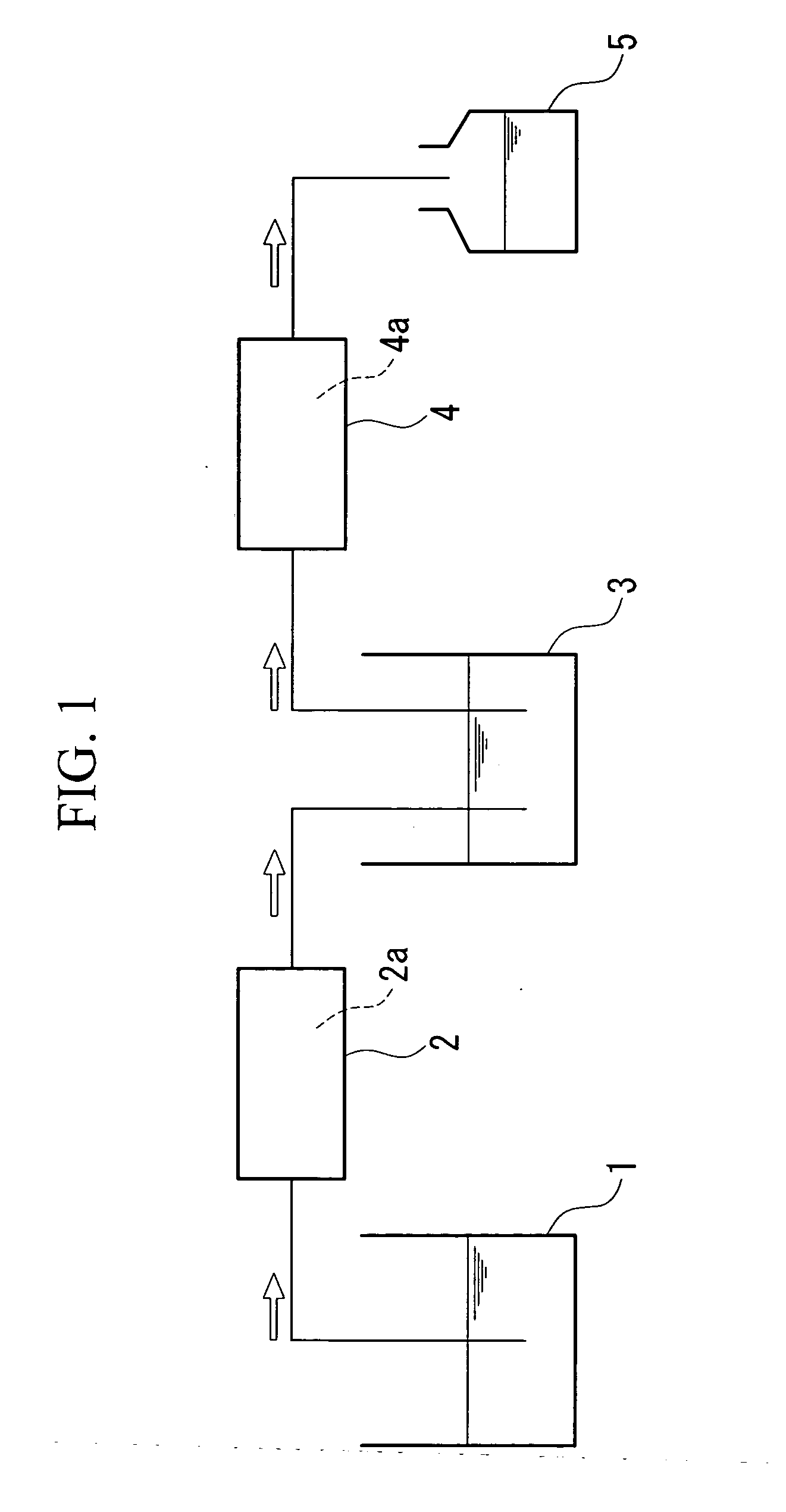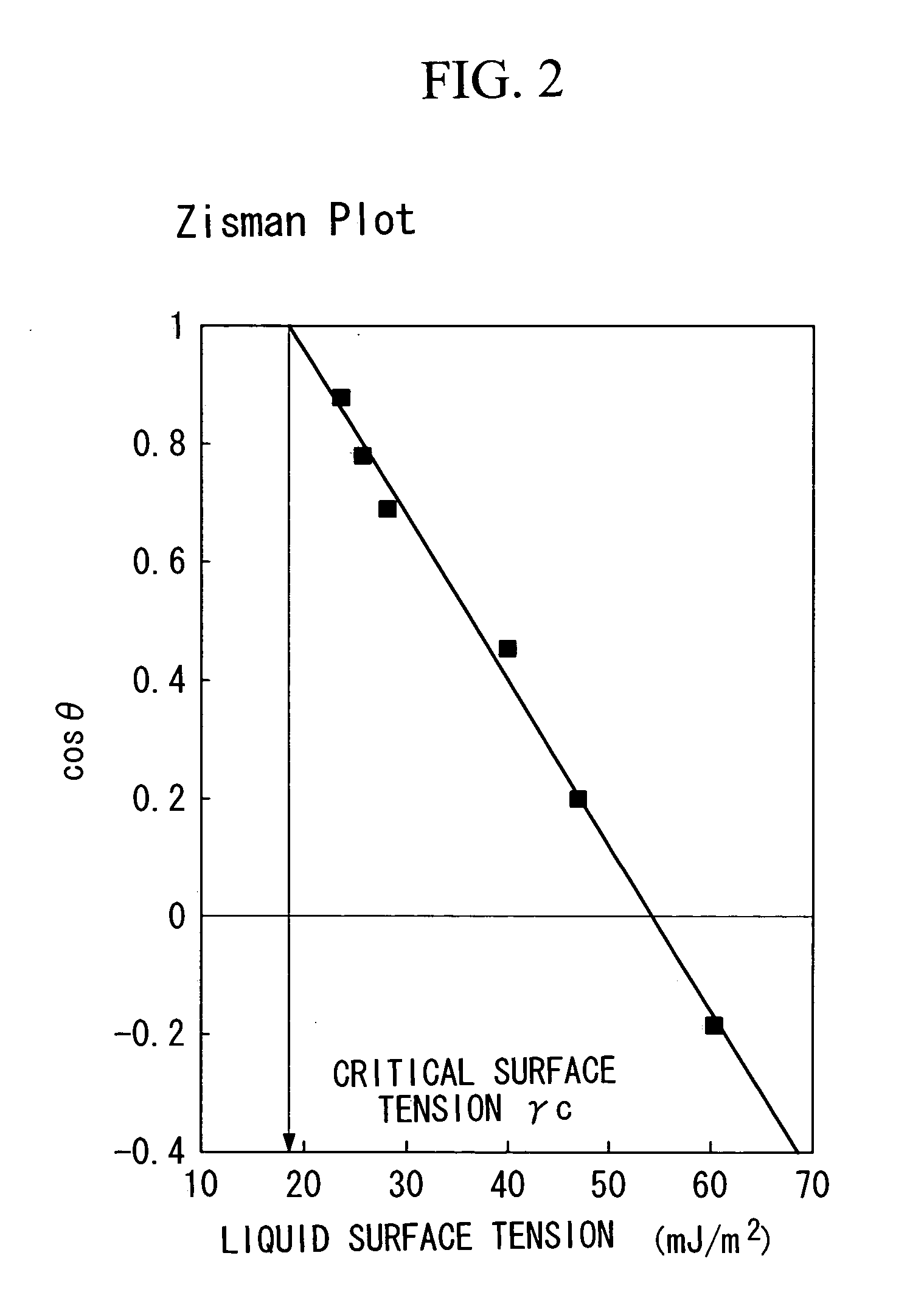Process for producing photoresist composition, filtration device, application device, and photoresist composition
a technology of photoresist composition and filtration device, which is applied in the direction of photomechanical equipment, instruments, photosensitive materials, etc., can solve the problems of insufficient storage stability, particularly undesirable bridges and scum, and achieve the effect of improving solubility, improving pattern shape, and favorable balan
- Summary
- Abstract
- Description
- Claims
- Application Information
AI Technical Summary
Benefits of technology
Problems solved by technology
Method used
Image
Examples
first embodiment
[0068] A production process, a filtration device, an application device, and a photoresist composition according to the aforementioned first through fourth aspects are described below with reference to a first embodiment.
[0069] The features of these aspects can provide technology for producing a photoresist composition comprising a so-called hydroxystyrene resin containing hydroxystyrene structural units as the base component, wherein the composition is capable of suppressing the occurrence of defects, and particularly fine scum and microbridges, in the resist pattern following developing.
[0070] Furthermore, the features of these aspects also provide technology for producing a photoresist composition with superior foreign matter characteristics.
[0071] Furthermore, the features of these aspects also provide technology for producing a photoresist composition with excellent storage stability as a resist solution.
[0072] In addition, the features of these aspects also provide a photo...
example 3
(i)-3 Sequence Example 3
[0156] The post-filtration of the above example 1 and the pre-filtration of the example 2 can also be combined.
[0157] Preferred configurations for this combination are simply a combination of the configurations described above in the examples 1 and 2.
[0158] Of the above, the most preferred filtration sequence in terms of the effects achieved is the sequence described below.
(ii)-1 Preferred Configuration: Filtration is Conducted Once or Twice Using the First Filter, and then a Final Filtration is Performed Using a Second Filter Formed from Polyethylene or Polypropylene.
[0159] This operation provides a superior defect reduction effect, as well as excellent foreign matter characteristics and storage stability as a resist solution.
[0160] Configuration of the Filtration Device
[0161] As the filtration device, a variety of different configurations can be employed.
[0162] For example, the type of device shown in FIG. 1, which represents a device used in the pr...
second embodiment
[0190] A production process of the aforementioned fifth aspect, a filtration device of the sixth aspect, and an application device of the seventh aspect are described below with reference to a second embodiment.
[Operational Sequence and Device]
[0191] The difference between the second embodiment and the first embodiment is that the second embodiment employs a first filter 2a comprising a nylon membrane with a pore size no larger than 0.04 μm as the first filtration portion 2 shown in FIG. 1.
[0192] By using a first filter equipped with a first filtration membrane formed from a nylon membrane with a pore size no larger than 0.04 μm, a reduction in the level of defects, and in particular a suppression of fine scum and microbridges, and improvements in both the foreign matter characteristics and the storage stability as a resist solution can be achieved.
[0193] The reasons for these observations are not entirely clear, but it is surmised that using a nylon membrane that satisfies the ...
PUM
| Property | Measurement | Unit |
|---|---|---|
| critical surface tension | aaaaa | aaaaa |
| pH | aaaaa | aaaaa |
| zeta potential | aaaaa | aaaaa |
Abstract
Description
Claims
Application Information
 Login to View More
Login to View More - R&D
- Intellectual Property
- Life Sciences
- Materials
- Tech Scout
- Unparalleled Data Quality
- Higher Quality Content
- 60% Fewer Hallucinations
Browse by: Latest US Patents, China's latest patents, Technical Efficacy Thesaurus, Application Domain, Technology Topic, Popular Technical Reports.
© 2025 PatSnap. All rights reserved.Legal|Privacy policy|Modern Slavery Act Transparency Statement|Sitemap|About US| Contact US: help@patsnap.com



